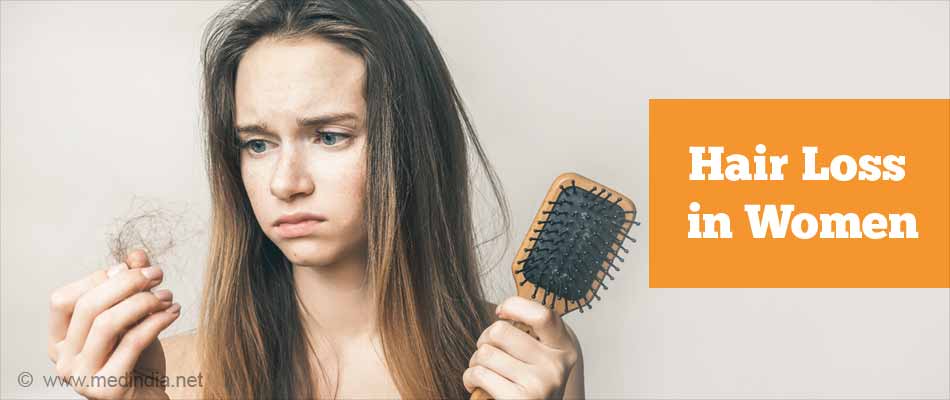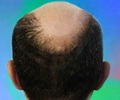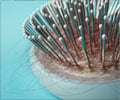About
If you are a woman whose hair is suddenly and rapidly thinning, you are not alone - hair loss (Alopecia) - may be less obvious in women than in men, but it is almost as common and much more emotionally devastating. The good news is that if you proactively try to understand why you are losing hair and go for suitable treatment, you have a better chance of being able to stop your hair from falling than men generally have.
First, something about normal hair loss – healthy women with a head full of hair can expect to lose 50-100 strands daily. If you are losing more than this, or if it seems that the hair you lose is either not being replaced or it’s getting replaced by thinner, finer hair (a process called miniaturization), you have a problem.
Most women notice that their ponytail or braid is getting thinner, or that their part line is expanding. This is a good time to start treatment – the earlier you start, the better your chances of holding on to the hair you have and avoiding more extreme loss.

But before starting treatment, you need to understand why you are losing hair – treatment is more effective when it’s geared to the real cause. For this, it is often useful to divide hair loss into categories depending on the pattern of loss:
1. Diffuse thinning
Most women lose hair like this – a form of general thinning all over the scalp - unlike men who begin to lose hair in a characteristic pattern beginning from their temples and the top of their heads.
Diffuse thinning may be caused by:
Medications: Hair loss can happen as a side effect of medication for birth control, slimming, high-blood pressure, mood disorders, thyroid problems, and diseases like cancer.
Diseases: Hair loss can also be a symptom of something going wrong in your body, and is one of the manifestations of a range of conditions including polycystic ovaries, thyroid disease, insulin resistance, anemia, lupus and general malnutrition. Hair Loss in Men Lifestyle choices: A poor diet (especially crash dieting) has been linked to unhealthy hair which falls easily.
Life stressors: Childbirth, illnesses or injury can cause hair fall. The hair stops growing, and, two to three months after the event, the root dies and the hair falls out. This kind of hair fall is usually easily replaced so long as the stressor is avoided.
Hormonal imbalances: A delicate balance between body hormones keeps your hair looking good. When the hormones are out of whack (one reason among many may be high androgen index birth control pills), hair starts to fall or begins to miniaturize. The hormone at the ‘root’ of the problem is DHT(dihydrotestosterone, a derivative of the male hormone testosterone), the presence of which in the hair follicles is linked to eventual follicle death.
Genetics: Most women lose hair as they age, and hair loss seems to run in families, with some families tending to have thicker hair than others. Though the mechanism of genetic hair loss is also DHT (by a process scientists don’t understand yet), genetics makes some follicles more sensitive to the effects of DHT than others.
2. Localised hair loss
In this distressing condition, less common than diffuse hair loss, women lose hair in patches all over the scalp. But this is both more treatable and more amenable to surgery than diffuse hair loss.
Again, a doctor will usually try to find out why this is happening before she suggests a course of treatment.
Traction alopecia: The hair is literally pulled out – usually by styles that involve stretching the hair tight, like ponytails or braids, and sometimes by surgical procedures like the facelift when the skin is ‘tightened’. If the style has been maintained a long time, sometimes the follicles die and surgery may be the only option. Otherwise, a change to a freer hairstyle can replace the hair within a year.
Alopecia areata: In this unusual condition, the hair falls out in patches leaving smooth, bald skin. This is thought to be an auto-immune disorder, when the body’s immune system begins to attack its own hair follicles. Sometimes the condition resolves by itself, sometimes treatment with follicle-stimulating drugs and steroids will help.
Skin diseases: Eczema, dermatitis, psoriasis and fungal infections, among others (when they affect the scalp), can cause hair fall. Usually the place where the hair falls off will show a rash.
3. Male pattern balding in women
A small number of women will lose their hair in the typical male pattern – going bald over the temples and in the crown of the head and eventually all over the head. This can wreck a woman’s emotional and social life, but fortunately this is more treatable than the common, diffuse pattern of hair loss among women. The cause is usually a combination of hormones and genetics.










